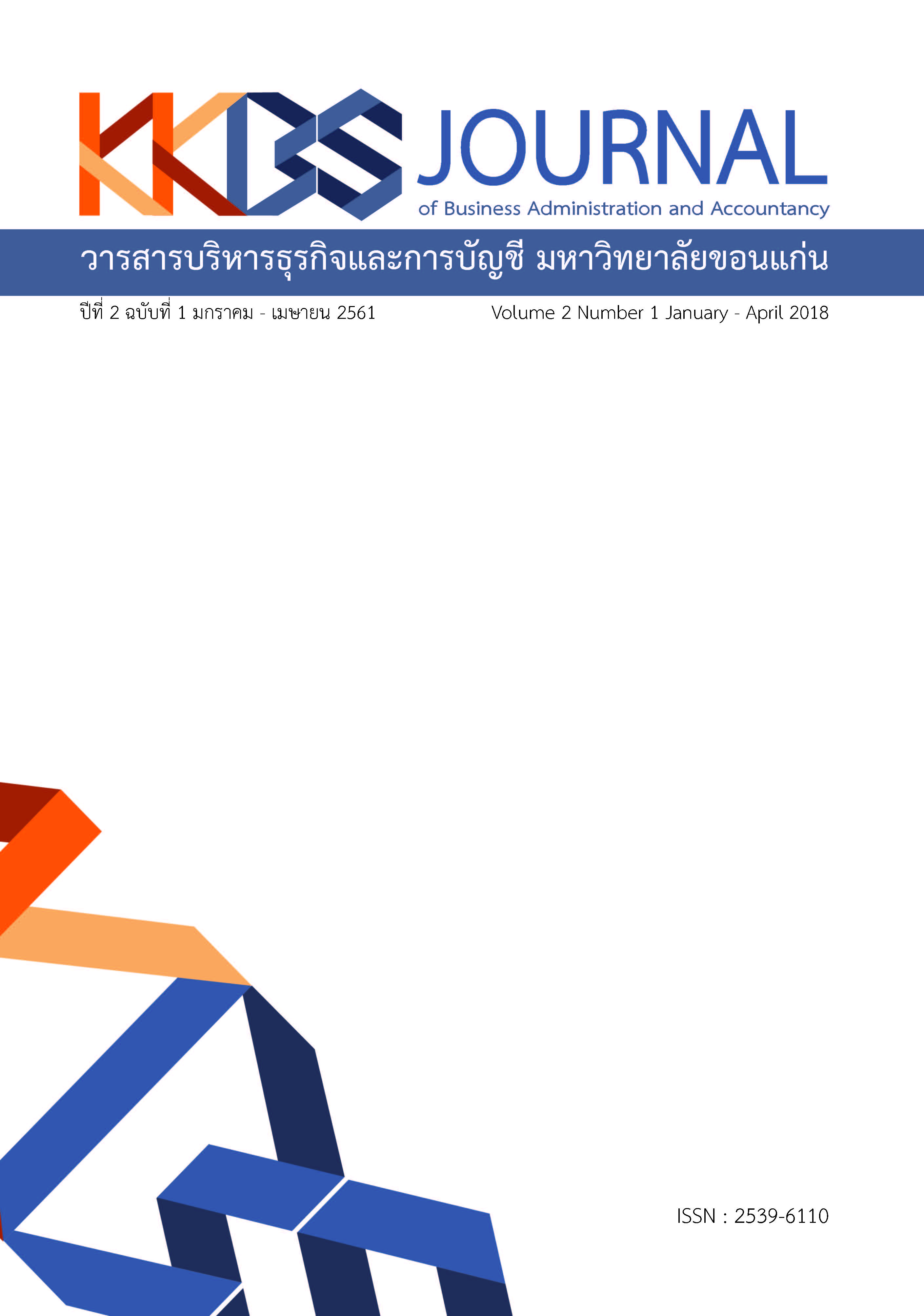The Relationship between Audit Committee Compositions and Audit Fees of Listed Companies in The Stock Exchange of Thailand
Main Article Content
Abstract
This study aimed at identifying information about audit committee composition and qualifications of audit committee, as well as the relationship between audit committee composition and audit fees of listed companies in The Stock Exchange of Thailand. The audit committee composition consists of (1) a number of audit committee members, (2) independence of audit committee members, (3) knowledge and expertise in accounting or finance of audit committee members, and(4) anumber of audit committee attendance. The samples includeThai listed companiesbetween 2012 and 2016, total 442 companies. Descriptive statistics (mean, minimum, maximum, and standard deviation) and inferential statistics (multiple regression analysis technique) were used to describe the results and test the relationship between audit committee composition and audit fees. As expected at 95% confidence interval,independent of audit committee members, knowledge and expertise in accounting or finance of audit committee members, and a number of audit committee attendance positively associated with the audit fees, while a number of audit committee members negatively associated with the audit fees. Furthermore, the study also found that company size, company complexity, operating loss, and type of audit firm positively associated with the audit fees.
Article Details
The articles published in the journals are the authors' opinions, not the opinion of the editorial team or administrative staff. The articles published is copyright of the Journal of Business Administration and Accounting, Khon Kaen University.
References
Collier, P.& Gregory, A. (1996). Audit committee effectiveness and the audit fee.The European Accounting Review, 5(15), 177-198.
Thongchai, J. (2008). Determinants of audit fee: a case study of listed companies in the Stock Exchange of Thailand. Master of Independent Study in Accountancy, Graduate School, Chiang Mai University. (In Thai)
Goodwin-Stewart, J. & Kent, P. (2006). Relation between external audit fees, audit committee Characteristics and internal audit.Retrieved on November 6,2017,from:https://epublications.bond.edu.au/business_pubs/14/
Lifschutz, S., Jacobi, A. & Feldshtein, S. (2010). Corporate governance characteristics and external audit fees: A study of large public companies in Israel. International Journal of Business and Management, 5(3), 109-116.
Charoenkijjarukorn, P. (2013). Sarbanes-Oxley Act and Overseas Corporate Governance to Good Governance in Thailand. Chulalongkorn Business Review, 35(138), 92 - 119. (In Thai)
Rustam, S. Rashid, K. & Zaman, K. (2013). The relationship between audit committees,Compensation incentives and corporate audit fees in Pakistan. Economic Modelling,31(3), 697-716.
Securities and Exchange Commission. (2010). The Audit Committee's Manual. Retrieved on October 15, 2017, from/https://www.sec.or.th/TH/RaisingFunds/EquityDebt/Documents/AChandbook.pdf (In Thai)
The Stock Exchange of Thailand. (1999). Guidelines for the Audit Committee.3rded. Bangkok: Boonsirisite printing. (In Thai)
Sodsai, Y. (2011). The Relationship between corporate governance structure and auditor fees: A case study in companies in The Stock Exchange of Thailand. Master of Independent Study in Accountancy, Faculty of Management and Tourism, Burapha University. (In Thai)


